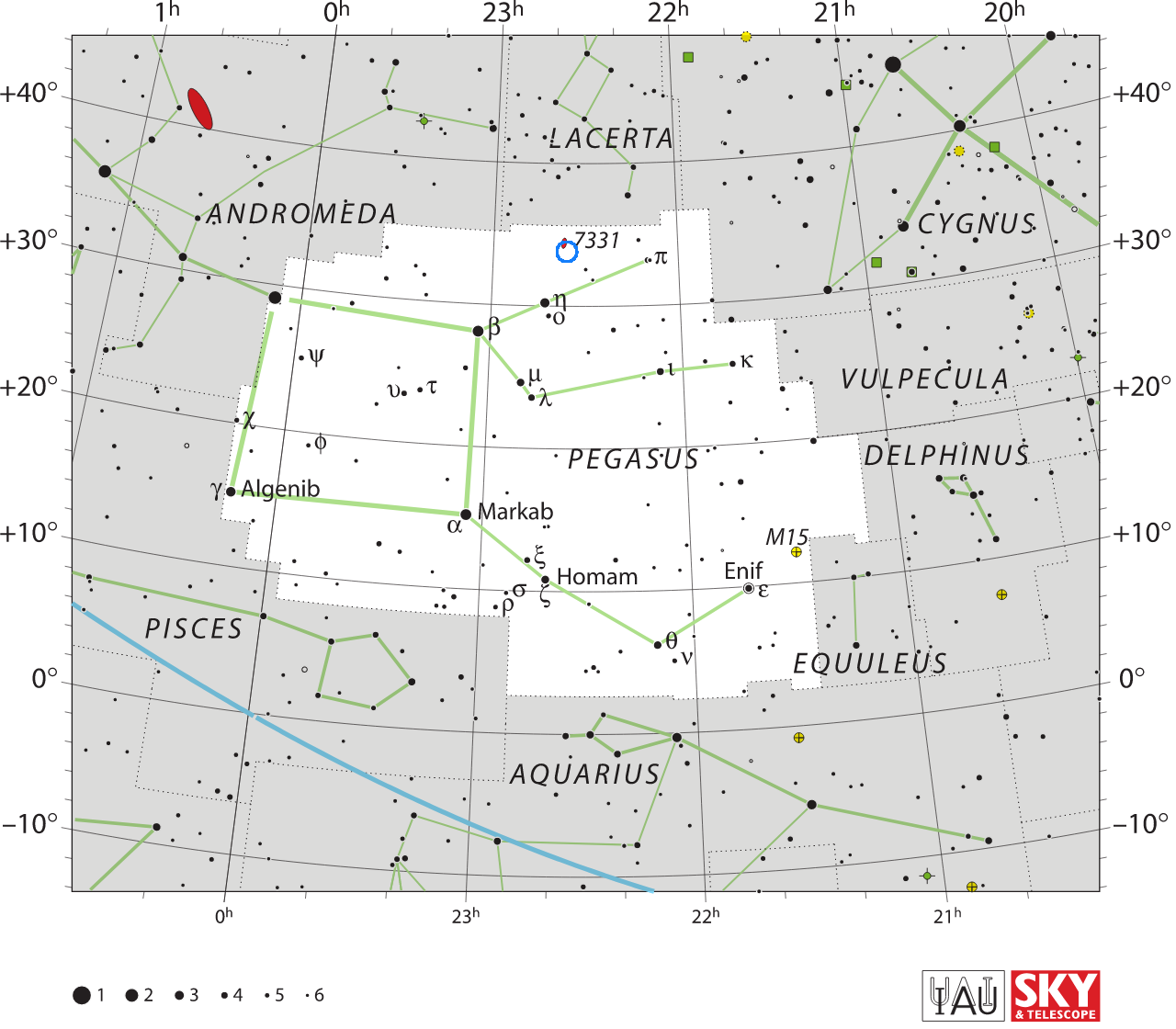NGC 7318 on:
[Wikipedia]
[Google]
[Amazon]
 NGC 7318 (also known as UGC 12099/UGC 12100 or HCG 92d/b) is a pair of colliding galaxies about 280 million light-years from Earth. They appear in the Constellation Pegasus and are members of Stephan's Quintet.
The Spitzer Space Telescope revealed the presence of a large intergalactic shock wave, shown by an arc produced by NGC 7318b colliding with the group at ≥ 900 km/sec. As NGC 7318b collides with NGC 7318a, atoms of hydrogen in the cluster's gas are heated by the shock wave, producing the green glow. The molecular hydrogen visible in the collision is one of the most turbulent forms known. This phenomenon was discovered by an international team of scientists of the
NGC 7318 (also known as UGC 12099/UGC 12100 or HCG 92d/b) is a pair of colliding galaxies about 280 million light-years from Earth. They appear in the Constellation Pegasus and are members of Stephan's Quintet.
The Spitzer Space Telescope revealed the presence of a large intergalactic shock wave, shown by an arc produced by NGC 7318b colliding with the group at ≥ 900 km/sec. As NGC 7318b collides with NGC 7318a, atoms of hydrogen in the cluster's gas are heated by the shock wave, producing the green glow. The molecular hydrogen visible in the collision is one of the most turbulent forms known. This phenomenon was discovered by an international team of scientists of the
Hickson 92 in Pegasus
SIMBAD: VV 288 -- Interacting Galaxies
SIMBAD
UGC 12100—Interacting Galaxies Barred spiral galaxies Interacting galaxies Elliptical galaxies Peculiar galaxies Stephan's Quintet Pegasus (constellation) 7318 12099 69260 319 {{Elliptical-galaxy-stub
 NGC 7318 (also known as UGC 12099/UGC 12100 or HCG 92d/b) is a pair of colliding galaxies about 280 million light-years from Earth. They appear in the Constellation Pegasus and are members of Stephan's Quintet.
The Spitzer Space Telescope revealed the presence of a large intergalactic shock wave, shown by an arc produced by NGC 7318b colliding with the group at ≥ 900 km/sec. As NGC 7318b collides with NGC 7318a, atoms of hydrogen in the cluster's gas are heated by the shock wave, producing the green glow. The molecular hydrogen visible in the collision is one of the most turbulent forms known. This phenomenon was discovered by an international team of scientists of the
NGC 7318 (also known as UGC 12099/UGC 12100 or HCG 92d/b) is a pair of colliding galaxies about 280 million light-years from Earth. They appear in the Constellation Pegasus and are members of Stephan's Quintet.
The Spitzer Space Telescope revealed the presence of a large intergalactic shock wave, shown by an arc produced by NGC 7318b colliding with the group at ≥ 900 km/sec. As NGC 7318b collides with NGC 7318a, atoms of hydrogen in the cluster's gas are heated by the shock wave, producing the green glow. The molecular hydrogen visible in the collision is one of the most turbulent forms known. This phenomenon was discovered by an international team of scientists of the Max Planck Institute for Nuclear Physics
The Max-Planck-Institut für Kernphysik ("MPI for Nuclear Physics" or MPIK for short) is a
research institute in Heidelberg, Germany.
The institute is one of the 80 institutes of the Max-Planck-Gesellschaft (Max Planck Society), an independent, n ...
(MPIK) in Heidelberg
Heidelberg (; Palatine German language, Palatine German: ''Heidlberg'') is a city in the States of Germany, German state of Baden-Württemberg, situated on the river Neckar in south-west Germany. As of the 2016 census, its population was 159,914 ...
. This collision can help provide a view into what happened in the early universe, around 10 billion years ago.
References
External links
*Hickson 92 in Pegasus
SIMBAD: VV 288 -- Interacting Galaxies
SIMBAD
UGC 12100—Interacting Galaxies Barred spiral galaxies Interacting galaxies Elliptical galaxies Peculiar galaxies Stephan's Quintet Pegasus (constellation) 7318 12099 69260 319 {{Elliptical-galaxy-stub